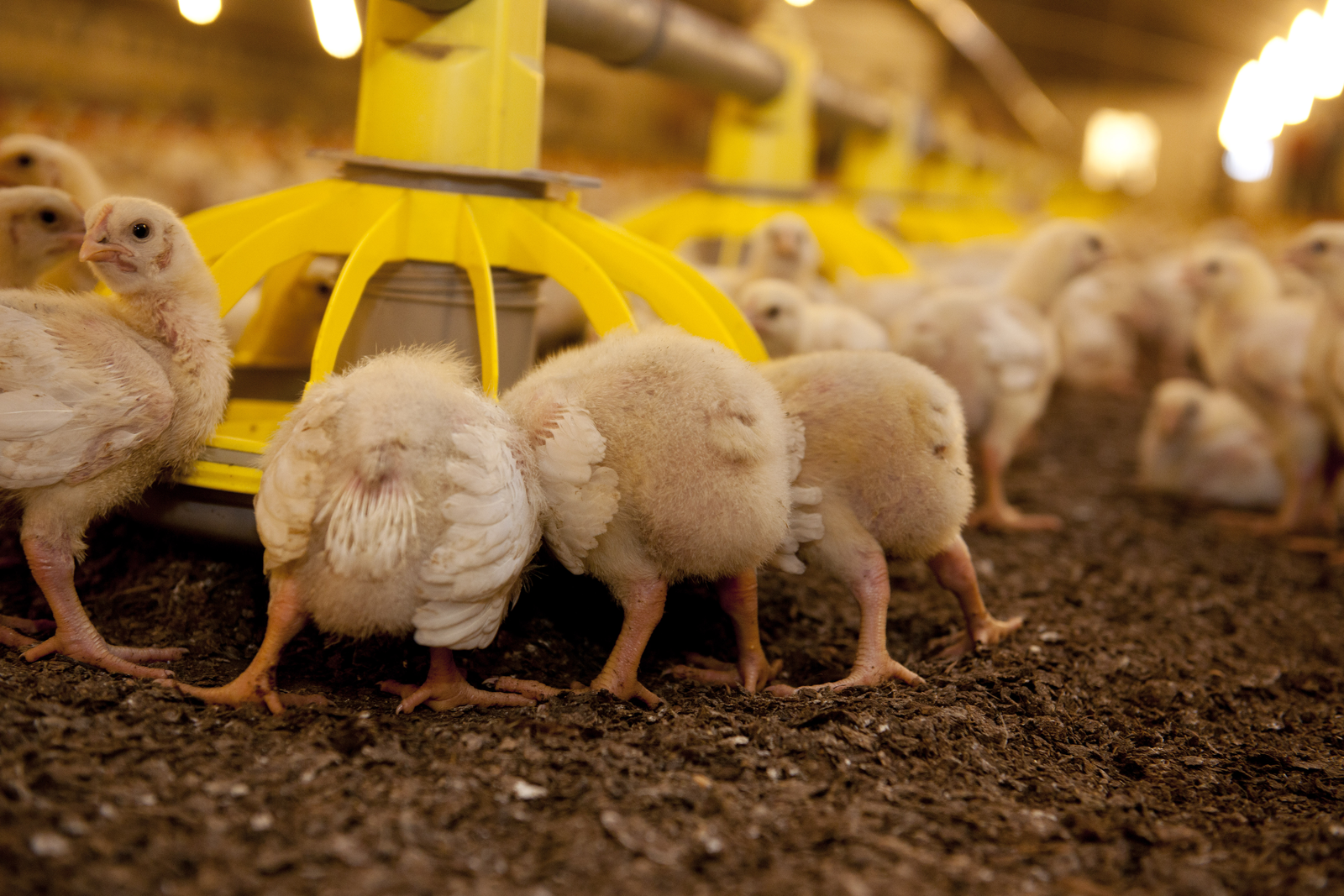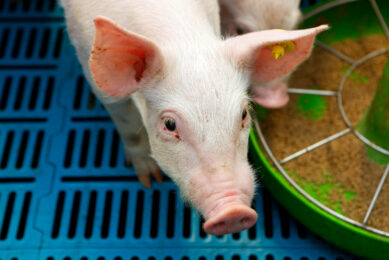Probiotics in necrotic enteritis challenged birds

New US field studies show that broilers induced with necrotic en¬teritis (NE), combining GalliPro® Max (Bacillus subtilis) with in-feed antibiotics leads to better production performance than treatment with antibiotics alone.
Two NE challenge studies conducted at Southern Poultry Research in Athens, Georgia were designed to closely reflect conditions in commercial US poultry complexes. The purpose of the studies was to evaluate the impact on broiler performance of adding GalliPro® Max to feed containing either BMD or virginiamycin, antibiotics that have FDA-approved claims for growth promotion and the prevention of NE in the US.
Better feed efficiency with the priobiotic-antibiotic combination
“Results show that the probiotic-antibiotic combination treatments were associated with better weight gain and feed efficiency than either antibiotic alone,” Harrington stated. “This suggests a synergistic effect of combining GalliPro® Max with in-feed antibiotics in broilers at risk of developing NE.”
Birds in study had unlimited access to feed and water
The studies were conducted in conventional US poultry houses with earthen floors, built-up litter and standard heating and ventilation systems. All birds had unlimited access to feed and water throughout the 42-day observation periods. In each study, 1,080 healthy, vaccinated, male chicks were randomised 45 at a time to one of three different treatment regimens, which were replicated eight times each.
Two groups: 1 with probiotics and antibiotics and other with neither
All treatment regimens were based on a standard, corn-and-soy-based diet, plus recommended nutrient levels and salinomycin as a coccidiostat. Both studies included two control groups: one received neither probiotics nor antibiotics (Treatment 1); the other (Treatment 3) received only antibiotics (Table 1). Treatment 2 in each study consisted of either virginiamycin or BMD, plus standard doses of GalliPro® Max.
Table 1 – Experimental design: Probiotic/antibiotic combination studies during NE challenge
Birds exposed to NE through feed
On days 19, 20 and 21 of the studies, all birds were exposed through feed to a local isolate of Clostridium perfringens known to cause NE. On day 22, five birds from each pen were euthanized and examined for NE lesions. On days 21, 35 and 42, average weight gain (AWG) and feed conversion (FCR) were assessed for each pen. Starter feed was used until day 21 of the study, grower feed until day 35, and finisher feed until day 42.
Results: Probiotic group showed higher weight gains
NE lesion analysis on day 22 confirmed that disease challenge was successful in both studies and typical of subclinical infections found in commercial poultry production. On day 21, numerically higher weight gains and lower feed conversion ratios in both studies suggested an early benefit of probiotic treatment (Tables 2 and 3).
Table 2 – Virginiamycin study: NE lesion scores, feed conversion and weight gain
Throughout the duration of both studies, the probiotic groups continued to demonstrate the lowest feed conversion ratios. In the BMD study, the probiotic groups had consistently higher weight gain than either control group.
Table 3 – BMD study: NE lesion scores, feed conversion and weight gain
Enhanced intestinal performance
According to Harrington, the better performance of the probiotic groups may be due to enhanced intestinal integrity and function. In previous studies, he says, broilers treated with GalliPro® Max had 9% longer villi (nutrient-absorbing projections lining the small intestine) than birds treated with antibiotics. (Figure 1). “The longer the villi, the more surface area there is to absorb nutrients,” he explains. “The result is better weight gain, better feed efficiency and better overall performance.”

Figure 1- Increased villus height using GalliPro® Max.
Probiotic-antibiotic synergies
In addition, Harrington says, probiotics work synergistically with antibiotics by balancing the microflora in the gut. “Probiotics complement antibiotics by keeping disease-causing bacteria in check — the more ‘good’ bacteria there are, the harder it is for pathogens to obtain the nutrition they need to grow,” he explains. “As these studies indicate, combining probiotics and antibiotics during intestinal challenge allows producers to meaningfully improve production performance, with no diet changes necessary.”











